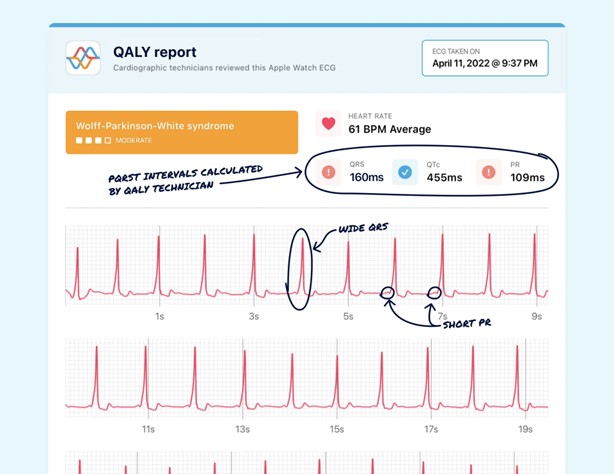A nurse is reviewing the arterial blood gas results for a client in the ICU who has kidney failure and determines the client has respiratory acidosis. Which of the following findings should the nurse expect?
Hyperactive deep tendon reflexes.
Warm, flushed skin.
Widened QRS Complexes.
Bounding peripheral pulses.
The Correct Answer is C
Widened QRS Complexes.
Choice A rationale:
Hyperactive deep tendon reflexes are not typical findings in respiratory acidosis. They are more commonly associated with conditions like hypocalcemia or hypercalcemia.
Choice B rationale:
Warm, flushed skin is not directly related to respiratory acidosis. It is not a typical manifestation of this acid-base imbalance.
Choice C rationale:

Widened QRS complexes on an ECG are characteristic findings in respiratory acidosis. Acidosis can lead to changes in the electrical conduction of the heart, resulting in QRS complex widening.
Choice D rationale:
Bounding peripheral pulses are not directly associated with respiratory acidosis. They may be seen in conditions like hyperthyroidism or anemia but are not specific to respiratory acidosis. Remember, always interpret lab results and clinical findings in the context of the patient's overall condition, medical history, and other relevant factors to provide the best care possible.
Nursing Test Bank
Naxlex Comprehensive Predictor Exams
Related Questions
Correct Answer is A
Explanation
Choice A rationale:
Hypophosphatemia is a condition characterized by low levels of phosphate in the blood, which can be caused by various factors, including malnutrition. In this case, the patient has a history of stomach ulcers, which might have contributed to poor nutrient absorption. The nurse should request a dietitian consult to ensure the patient receives an appropriate diet rich in phosphorus, which is essential for cellular function, bone health, and energy metabolism.
Choice B rationale:
Providing aluminum hydroxide antacids as prescribed is not the appropriate intervention for hypophosphatemia. Aluminum hydroxide antacids can bind to phosphate in the gastrointestinal tract, reducing its absorption and potentially worsening the patient's already low phosphate levels.
Choice C rationale:
Instructing the patient to avoid poultry, peanuts, and seeds is not suitable for this situation. These foods are good sources of phosphorus, and avoiding them would further deplete the patient's already low phosphate levels.
Choice D rationale:
Instructing the patient to avoid the intake of sodium phosphate is not necessary for hypophosphatemia. While sodium phosphate preparations are used as laxatives, there is no indication that the patient is taking them, and they are not relevant to the management of hypophosphatemia.
Correct Answer is ["A","C","D"]
Explanation
The correct answer is choice A, C, and D.
Choice A rationale:
Lethargy is a common symptom of metabolic alkalosis due to the body’s attempt to compensate for the altered pH balance, leading to decreased energy levels and fatigue.
Choice B rationale:
Kussmaul’s respirations are typically associated with metabolic acidosis, not alkalosis. These deep, labored breaths are the body’s way of trying to expel excess carbon dioxide to correct acidosis.
Choice C rationale:
Circumoral paresthesia, or tingling around the mouth, is a symptom of metabolic alkalosis. This occurs due to changes in calcium ion concentration affecting nerve function.
Choice D rationale:
Bicarbonate excess is a direct cause of metabolic alkalosis. Elevated bicarbonate levels in the blood lead to an increased pH, resulting in alkalosis.
Choice E rationale:
Flushing is not a typical symptom of metabolic alkalosis. It is more commonly associated with conditions that cause vasodilation or increased blood flow to the skin.
Whether you are a student looking to ace your exams or a practicing nurse seeking to enhance your expertise , our nursing education contents will empower you with the confidence and competence to make a difference in the lives of patients and become a respected leader in the healthcare field.
Visit Naxlex, invest in your future and unlock endless possibilities with our unparalleled nursing education contents today
Report Wrong Answer on the Current Question
Do you disagree with the answer? If yes, what is your expected answer? Explain.
Kindly be descriptive with the issue you are facing.
